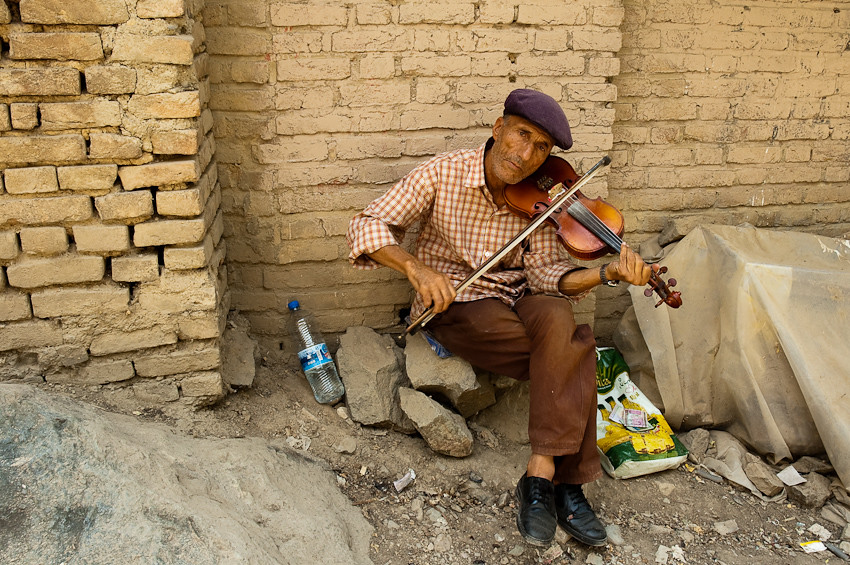10 Facts About the Recession in Iran

Iran, a southwest Asian nation of over 81 million people, currently struggles with a dire recession. Iranians face a combination of inflationary pressures and economic stagnation, known as stagflation. Listed below are 10 facts about the recession in Iran:
10 Facts About the Recession in Iran
- Sanctions – The recent resumption of U.S. sanctions has taken a large toll on Iran’s economy. Sanctions contributed to a gross domestic product contraction of 3.93 percent in 2018 after a GDP growth of 3.73 percent the previous year. The sanctions particularly target oil exports, Iran’s primary revenue stream. A BBC report states that Iran’s oil trade has lost $10 billion in the past six months because of sanctions.
- Oil Dependency – Iran contains the fourth most crude oil reserves in the world, which has led to a volatile economy based on petroleum. Oil was a boon to Iran’s economy in 2016, a year in which the country witnessed a 12.52 percent GDP growth. However, as the World Bank notes, this success rapidly diminished to approximately 3.8 percent growth in 2017 as petrodollars became rarer.
- Ambiguous Poverty Line – Poverty is difficult to fight because Iran’s government cannot decide on a poverty line. The Iran Observer stated in 2017 that various government representatives define absolute poverty differently. Iranian Vice President of Economic Affairs Mohammad Nahavandian estimated 10 million Iranians live in poverty while, Parviz Fattah, head of the Khomeini Relief Foundation, claims the number is closer to 20 million.
- High Unemployment – Iran currently suffers from an unemployment epidemic, particularly among the educated youth. A mere 14,000 new jobs appeared yearly for the 700,000 youth entering the market between 2006 and 2011. Now, the Brookings Institution reports that college-educated men aged 25 to 29 years have a 34.6 percent unemployment rate, and women of the same group have a 45.7 percent rate.
- Emigration – One result of Iran’s employment dilemma is the mass emigration of skilled labor from the country. There is a surplus of skilled labor without the necessary demand, so educated Iranians flee the country for new opportunities. CNN Business reports that Iran’s Science Minister, Reza Faraji Dana, admitted 150,000 skilled Iranians had fled the nation in 2014 for this reason.
- High Cost of Living – The cost of living in Iran between 2018 and 2019 has skyrocketed alongside rapid inflation. According to the BBC, the Iranian rial has lost 60 percent of its value in the past year. Housing costs and medical attention have risen by 20 percent and especially harm the poorest individuals. In March 2019, a Statistical Centre of Iran report also showed a 57 percent increase in white meat prices and a 37 percent uptick in dairy costs for average citizens.
- Increasing Poverty – As employment and affordable goods become scarcer, more Iranians fall into poverty. The Brookings Institution estimates that poverty remained at roughly 10 percent nationally in 2011, but it has risen since then. Research by the Foundation for Defense of Democracies found that it rose as high as 38 percent in the Sistan and Balouchistan provinces between 2016 and 2017. The threat of insulated urban areas succumbing to poverty displays the problem’s magnitude. Qom, the renowned traditional center of Islamic clerical training, suffered from a 30 percent poverty rate in 2017.
- Relief International Helps – Relief International is one nongovernmental organization mitigating the recession’s effects and preventing the economic crisis from deepening. Originally founded by Iranian-Americans in 1990 as “The Iran Earthquake Relief Fund,” RI focuses on cash assistance for flood victims and training local NGOs. The floods in the Golestan province have exacerbated hard times, and RI’s instant cash assistance will help 2,000 families from slipping into poverty. RI also hopes to have an indirect effect on poverty reduction by training 20 Iranian NGOs in efficient service to the poor.
- Amenities Expanded – Despite the recession, most Iranians have access to basic amenities due to government efforts post-1984. The Brookings Institution charts that in 1984, below 80 percent of citizens had electricity or plumbing. The government realized the issue stemmed from underdeveloped rural areas and immediately provided funding. It was an incredibly successful campaign that brought Iranians universal electricity and plumbing by 2000. These efforts continue today, spawning progress in the midst of recession and delivering baths to nearly 100 percent of Iranians by 2017.
- Improving Efficiency – Iran’s government is acting to make the economy more efficient, and there are many recommendations available for enhancing fiscal stability. An International Monetary Fund consultation with Iran in 2015 congratulated the government on widening the revenue stream by implementing simple direct taxation. Recommendations included expanding employment for women and increasing privatization, both of which should unlock new productivity for the economy.
The above 10 facts about the recession in Iran show that many hurdles still block the country’s growth. However, the steady increase in access to amenities displays economic progress within the recession and the IMF’s recommendations provide viable solutions to stagflation. Continued improvements will service the poor and provide a path to Iran’s economic stability.
– Sean Galli
Photo: Flickr
